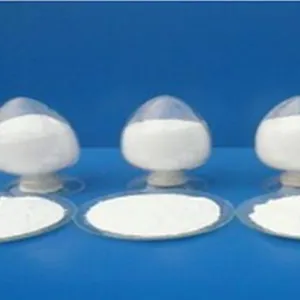
Understanding the Properties and Applications of Formic Acid in Various Industries and Research Fields
Formic Acid A Vital Organic Compound
Formic acid, chemically represented as HCOOH, is one of the simplest carboxylic acids. It is a colorless liquid that is mildly acidic and has a pungent odor, reminiscent of ant bites, which is how it got its name—derived from the Latin word formica, meaning ant. Formic acid is naturally found in various forms in nature, particularly in the venom of ants and the stings of certain bees and wasps.
This organic compound has been used by humans for centuries, with its historical significance dating back to the 17th century. It was first isolated in 1670 by the British chemist John Ray, who discovered it while investigating the properties of ant venom. Today, formic acid is recognized for its numerous applications across multiple industries, making it an essential compound in both chemical processes and industrial uses.
Formic Acid A Vital Organic Compound
In addition to textiles and leather, formic acid is widely used in agriculture. It serves as a preservative for silage, improving the storage and fermentation of fodder for livestock. Formic acid helps to inhibit harmful bacteria during the fermentation process, thereby enhancing the nutritional value of the stored feed. Moreover, it is also utilized in the formulation of pesticides and herbicides, safeguarding crops from pests while being less harmful to the environment compared to synthetic alternatives.
formic acid hcooh

The industrial applications of formic acid extend to the manufacturing of various chemicals. It is employed in the synthesis of numerous products such as the production of methyl formate, a solvent and reagent in organic chemistry. Additionally, formic acid is crucial in the production of formate salts and esters, which are valuable in the pharmaceutical industry for drug formulation.
The potential of formic acid in energy production is also gaining attention. It can be utilized in fuel cells, where it serves as a source of hydrogen for energy generation. As the world seeks alternative energy solutions, formic acid’s role in developing clean energy technologies is becoming increasingly relevant. Its ability to be easily produced from biomass enhances its attractiveness as a sustainable energy source.
However, despite its many applications, handling formic acid requires caution. It is corrosive and can cause skin burns and respiratory issues if inhaled. Therefore, proper safety measures should always be taken when working with this compound to minimize risks associated with exposure.
In conclusion, formic acid (HCOOH) is a multifaceted organic compound with diverse applications across industries such as textiles, agriculture, energy, and pharmaceuticals. Its natural occurrence, historical significance, and increasing relevance in sustainable practices highlight its importance in both technological advancement and ecological balance. As research continues to unveil new uses, formic acid will undoubtedly remain a vital compound in modern science and industry.
-
Pure Sodium Dichloroisocyanurate Dihydrate | Powerful DisinfectantNewsAug.29,2025
-
Industrial Chemicals: Quality & Purity for Every IndustryNewsAug.28,2025
-
Nitrile Rubber Honoring Strict Production StandardsNewsAug.22,2025
-
Aspartame Ingredients Honoring Food Safety ValuesNewsAug.22,2025
-
Fertilizer for Balanced Plant NutritionNewsAug.22,2025
-
Cyanide Gold Processing with High Purity AdditivesNewsAug.22,2025
-
Formic Acid in Textile Dyeing ApplicationsNewsAug.22,2025
Hebei Tenger Chemical Technology Co., Ltd. focuses on the chemical industry and is committed to the export service of chemical raw materials.
-

view more DiethanolisopropanolamineIn the ever-growing field of chemical solutions, diethanolisopropanolamine (DEIPA) stands out as a versatile and important compound. Due to its unique chemical structure and properties, DEIPA is of interest to various industries including construction, personal care, and agriculture. -

view more TriisopropanolamineTriisopropanolamine (TIPA) alkanol amine substance, is a kind of alcohol amine compound with amino and alcohol hydroxyl, and because of its molecules contains both amino and hydroxyl. -

view more Tetramethyl Thiuram DisulfideTetramethyl thiuram disulfide, also known as TMTD, is a white to light-yellow powder with a distinct sulfur-like odor. It is soluble in organic solvents such as benzene, acetone, and ethyl acetate, making it highly versatile for use in different formulations. TMTD is known for its excellent vulcanization acceleration properties, which makes it a key ingredient in the production of rubber products. Additionally, it acts as an effective fungicide and bactericide, making it valuable in agricultural applications. Its high purity and stability ensure consistent performance, making it a preferred choice for manufacturers across various industries.





